The Equipment and Tool Institute (ETI) held its annual ToolTech conference earlier this year in Coronado, CA, bringing together equipment and tool suppliers, original equipment manufacturers (OEMs) and other vendors for education, networking and one-on-one meetings with OEMs and aftermarket tool and equipment companies.
Presentations during the conference focused on current and growing trends, such as the use of artificial intelligence (AI) and education and credentialing. An automotive industry update was provided by Steve Greenfield, author and general partner at Automotive Ventures. In addition, panel discussions were held with shop owners and OEMs.
ETI President Chris Bahlman, senior product manager for Bosch Automotive Service Solutions, said the organization is in a transition phase, with renewed efforts to expand its membership and geographic reach.
“ETI has a unique position in the industry, advocating for providers of vehicle service tools, equipment, diagnostics, repair information, telematics, training and technologies,” he noted. “Because we are an apolitical organization, our events enable an honest and open exchange between our members, OEMs and other industry thought leaders.”
Bahlman said the challenges facing the industry are opportunities for ETI to welcome new members.
“Service and technology providers using AI in the workshop, training organizations, business service providers and others can benefit all members and vehicle OEMs,” he said. “Operating from a position of breadth, depth and strength in our membership shows the OEMs that the independent aftermarket is an indispensable partner to keep their customers satisfied.”
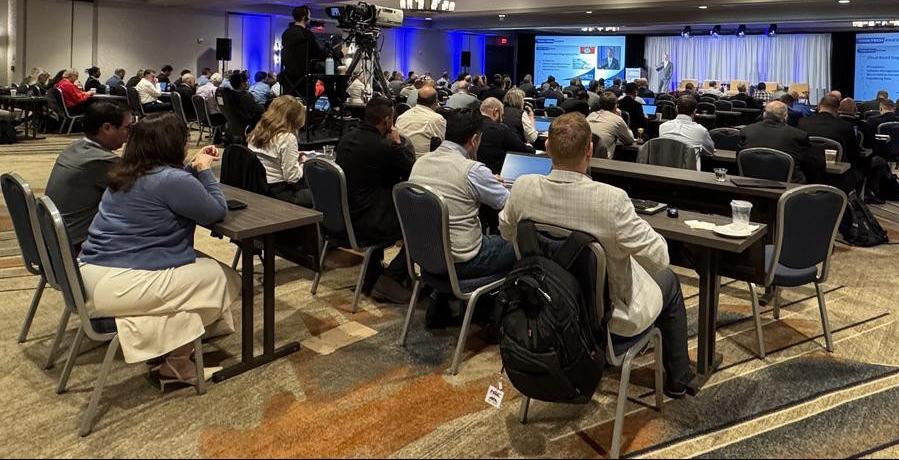 ETI brought together equipment and tool suppliers, OEMs and other vendors.
ETI brought together equipment and tool suppliers, OEMs and other vendors.
Bob Augustine, director of sales and business development for iOSiX, LLC, and immediate past president of ETI, emphasized the importance of the collision industry’s future involvement in ETI.
“If you look at the last 10 years, the landscape of where we are has changed dramatically,” he acknowledged. “ETI is pivoting right now into something which we were never really intending when it was formed.”
Augustine said there was once a very engaged collision group within ETI.
“We absolutely need to do everything we can to bring our brethren in the collision industry back to ETI,” he stressed. “Their participation is probably more important now than it ever has been.”
He said the first to see vehicles following an accident are collision repairers, and they need to understand the technology, tools and safety challenges for the repair.
The heavy-duty space is another group that Augustine foresees will become more involved in ETI due to the increasing use of ADAS features in trucks.
Industry Trends
During his presentation focused on current industry trends, Augustine noted how artificial intelligence (AI) and machine learning are increasingly being adopted by the industry in areas such as collision damage estimating, predictive maintenance, oil life, tire wear, EV state of charge (SOC) and asset management (productivity).
During the pandemic, Augustine said many insurance field adjuster jobs were eliminated. As a result, AI photo estimating was increasingly being adopted.
One of the challenges with photo estimating, according to Augustine, is the ability to write an accurate estimate that includes the damages resulting from advancements in vehicle technology.
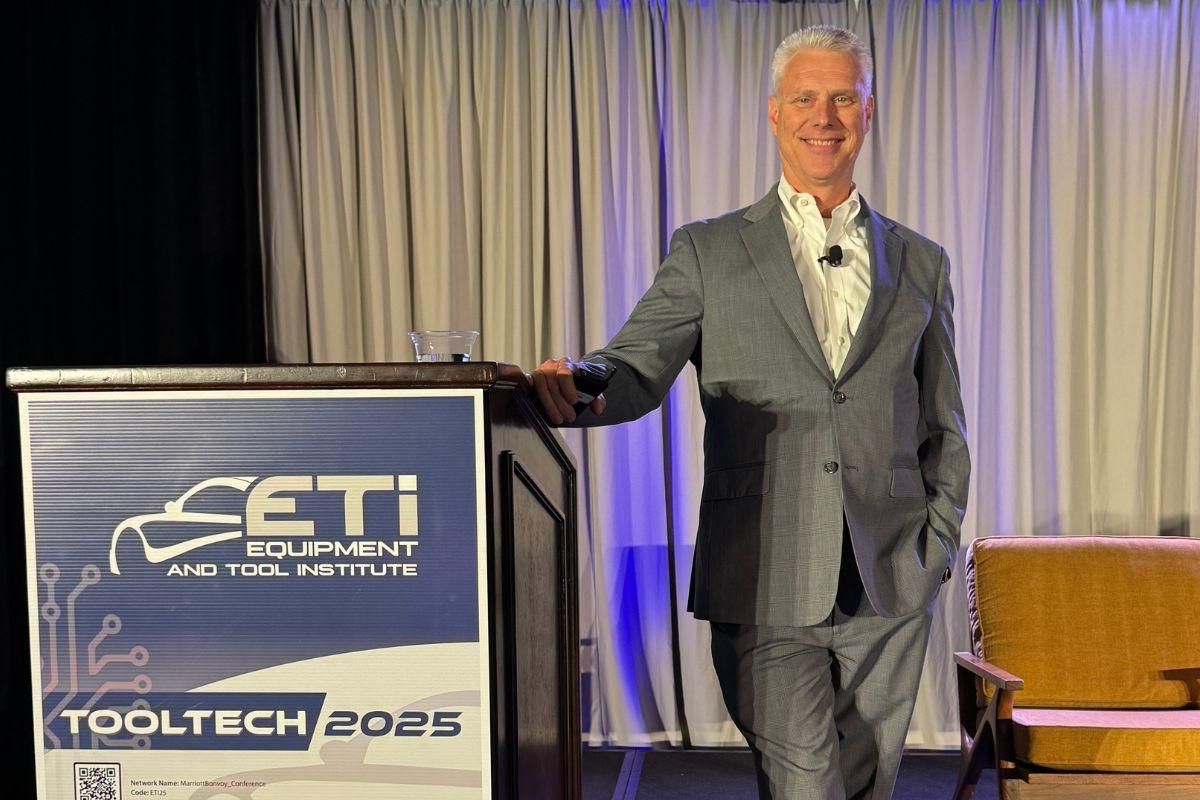 Bob Augustine.
Bob Augustine.
“Incorporating a vehicle health check from the on-board computer network(s) provides a window into the electrical integrity, which is almost always compromised in some way during a collision,” explained Augustine. “This can range from simple circuit faults to internal physical damage to sensors, control units, radar and cameras.”
Augustine also discussed issues related to the right to repair and the importance of providing independent collision repair shops with access to telematics data.
“Our big problem with right to repair right now is limited access to vehicle telematics data,” he shared. “… there's no enforcement in the existing agreements we have in place… more regulations don't make this problem go away.”
He said the intention behind the right to repair is to establish a standard where the independent aftermarket has essentially the same repair capability as a franchise dealer. However, with the technology in vehicles today, there are many times today when the dealer technician will be unable to diagnose a complaint but has the ability to reach out to OEM field support for guidance on how to complete the repair.
“We have to figure out how do we make those types of repairs available to an independent repair shop,” he emphasized.
If there is information, tools or technology that are not available to the aftermarket, Augustine said there must be an understandable resolution process that everybody knows so motorists can get their vehicles repaired.
“We have to deal with this problem as an industry,” he said. “It's not going away.”
Augustine also mentioned the need to address secure gateways.
“It has been a very important topic for everybody and I think we need to have, again, some consensus from the industry and how we're going to deal with this problem,” he reiterated.
Another trend Augustine talked about was cloud-based diagnostics and over-the-air (OTA) updates, first widely used by Tesla with the launch of the Model S in 2012. Most OEM telematics systems now have OTA capabilities.
“OTA would have been primarily for vehicle electronic control unit ECU reprogramming,” he explained. “That's now moving into diagnostics.”
Augustine said the use of cloud-based diagnostics can introduce challenges with intellectual property (IP) violations, software management issues and secure vehicle connections.
“If you've worked for a larger retailer or a bigger dealership, software management issues are a huge problem,” he shared.
He noted the main issues ETI will likely deal with in the future due to the introduction of plug-in hybrids, EVs and hydrogen vehicles. These include diagnostics (scan tools, telematics, service information and technical training) and specialty tools (undercar, EV and servicing).
As the industry encounters new vehicle technology, said there will likely be more legislative issues and encouraged ETI members to become industry advocates and subject matter experts. He also stressed the importance of forming industry partnerships.
“Legislative efforts take many years and if we're not in lockstep together on what our goals are, we end up with legislation that doesn't do what we want it to,” he pointed out. “Now is the time to get together and decide what we're going to be in five years as an industry, and we need to get together and work towards that goal.”
How Automakers are Managing Policy Changes
Hilary Cain, senior vice president of policy at the Alliance for Automotive Innovation, explored how automakers are managing the policy changes since Donald Trump became president. The Alliance for Automotive Innovation represents the auto industry and advocates for government policies to help keep the auto industry healthy and competitive.
Cain noted the significant swings in policies pertaining to electrification, trade and vehicle safety.
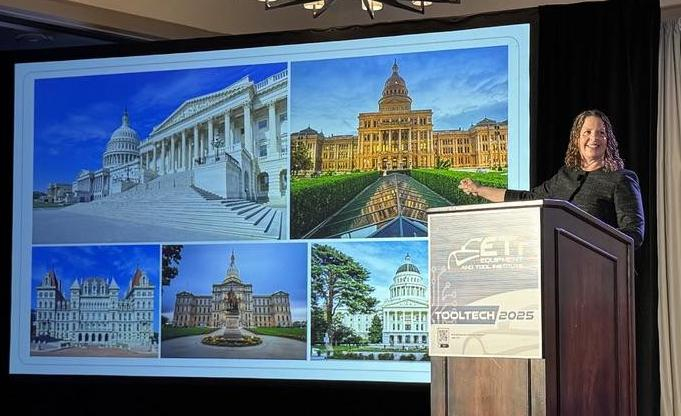 Hilary Cain.
Hilary Cain.
“President Biden loved electric vehicles,” said Cain. “He spent a lot of time during his presidency shepherding through government policies to rapidly advance electrification in this country.”
At the same time, she said the Environmental Protection Agency (EPA) and the U.S. Department of Transportation (DOT) developed aggressive new regulatory standards for greenhouse gas emissions and fuel economy standards that pushed automakers towards increasingly electrified fleets.
The Alliance took the position that the standards could only be achieved if there was a major push to establish charging infrastructure nationwide, along with incentives to support the significant investments that companies would need to make to electrify their fleets.
“The consumer EV market was going to have to grow at a fairly fast clip in order for there to be a sufficient number of consumers to buy all of the new EVs the auto companies were going to make,” she said.
In 2021, a federal charging program known as the National Electric Vehicle Infrastructure (NEVI) Formula Program was established. Tax incentives were also offered to help consumers purchase EVs.
Since then, Cain said that the U.S. EV market has stagnated. According to industry data, there was a 62% increase in EV sales between 2021 and 2022, a 35% increase between 2022 and 2023 and a 5% increase between 2023 and 2024.
Cain said the EPA and DOT have announced plans to redo those emissions and fuel economy regulations. In addition, federal funding for charging infrastructure has been paused, and the current administration is actively supporting the repeal of the EV tax incentives that were put in place as part of the Inflation Reduction Act.
“For companies that have invested billions of dollars electrifying their fleet with the expectation that more charging infrastructure would be coming as well as tax incentives to make vehicles more affordable for consumers, what would you do?” asked Cain.
Regarding trade policy, Cain said it’s a challenging environment for the auto industry, with companies trying to comprehend what the changes mean in the short-, mid- and long-term.
“What's particularly challenging here is that many of the decisions that auto companies have made about where to build manufacturing plants were made based on existing trade agreements,” she noted. “Now, you can agree or disagree about whether those trade agreements were a good thing or the right policy, but once they were made, it made perfect and reasonable sense for companies to make production decisions based on them.”
The Alliance anticipates vehicle prices will rise to offset tariff costs.
Cain also discussed motor vehicle safety and the changes expected with the Trump administration. During the Biden administration, new equipment requirements were mandated for automakers by the National Highway Traffic Safety Administration (NHTSA), such as the automatic emergency braking (AEB) rule. However, the Alliance doesn’t expect to see any safety mandates from NHTSA over the next several years.
“Instead, we anticipate that they will be focused on reviewing existing mandates, including that AEB rule, and seeing if and how they can be improved,” noted Cain. “At the same time, though, we anticipate that the Trump administration will be focused on trying to spur innovation and new technology and encourage companies to get [them] into vehicles as quickly as possible.”
One area in particular is the renewed focus on self-driving vehicles. She pointed out the work done during the first Trump administration, creating a regulatory framework that would allow the technology to be deployed.
The other area Cain foresees will be a change in approach between the two administrations is the right to repair.
“There has been a lot of work on this issue over many, many years and the ongoing desire from stakeholders on all sides of this to ensure that consumers continue to have the ability to have their vehicles serviced and repaired wherever they want to,” she explained.
The Alliance has worked closely with the Society of Collision Repair Specialists (SCRS) and the Automotive Service Association (ASA) to draft a federal automotive right to repair bill, called the SAFE Repair Act, that would, among other things, codify and modernize the existing right to repair memorandum of understanding and provide new repair related protections to consumers.
“We are really proud of it and very eager to see it enacted into law,” she added.
EU Automotive Industry Update & Impact on U.S.
An update on the European Union's (EU) automotive industry was provided by EU ETI Director Winston Lee, which included information about the European Commission's Industrial Action Plan, released March 5. The plan focuses on strengthening the industry’s competitiveness and accelerating the transition to zero-emission mobility.
“The EU automotive sector is a powerhouse, employing 13 million people and contributing about €1 trillion to Europe’s GDP,” said Lee. “It also accounts for a third of all the private research and development (R&D) in the EU.”
Lee noted European truck manufacturers make up 40% of the world's commercial truck market, according to Statista as of January 2025.
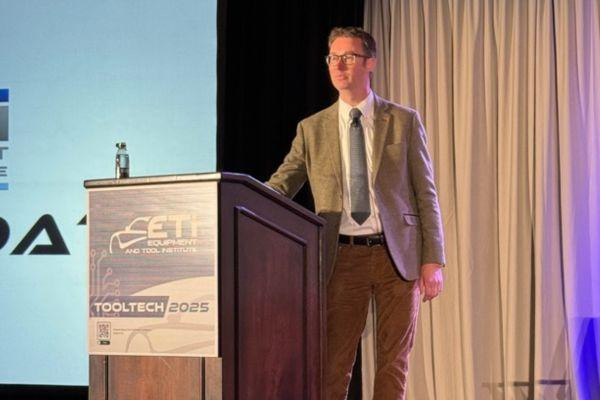 Winston Lee.
Winston Lee.
Similar to the U.S., Lee said the European auto industry is facing a shift toward zero-emissions vehicles, as well as connected and autonomous vehicles driven, by clean mobility and digital technologies such as AI and software-defined vehicles.
It is estimated more than one in five cars sold globally in 2024 was electric. EU battery electric vehicle (BEV) sales decreased 5.6% from 2023 to 2024, resulting in a market share decline from 14.6% to 13.6%.
Lee said EU automakers currently lag in batteries, software and autonomous driving technologies and face supply chain risks, raw material dependencies and fierce global competition.
To stay ahead, Lee said the EU has rolled out a bold action plan that includes the following:
Innovation and Digitization: The EU is launching a European Connected and Autonomous Vehicle Alliance this year and investing €1 billion in research and development through Horizon Europe.
Clean Mobility: With nearly 6 million zero-emission vehicles in the EU, Lee said plans are in place to amend CO2 emission standards for 2025-2026. Additionally, €570 million has been allocated for the development of charging infrastructure over the next couple of years.
Supply Chain and Competitiveness: Lee shared that the “Battery Booster” package will offer up to €3 billion from the Innovation Fund to ramp up battery manufacturing. The goal is to achieve 50% or more of European value-added in the battery supply chain by 2030. In addition, €350 million is being allocated for next-generation battery technology from 2025 to 2027.
Skills and Social Dimension: With job losses looming, Lee said the EU is setting up the European Fair Transition Observatory and making amendments to the European Globalization Fund to help workers reskill. “It's about economic sovereignty and jobs,” he explained. “Europe wants to be in control of its future, both skills and social support.” €90 million is being invested in 2026 for automotive skills training under the Pack for Skills program.
Level Playing Field: The EU is addressing unfair competition, for example, by countervailing duties on EV imports from China. It is also addressing conditions for foreign investments to boost EU competitiveness. “It's about keeping the game fair whilst opening markets through trade,” he noted.
Lee discussed the push toward autonomous driving with Europe’s plans for three cross-border testbeds by 2026 and harmonized rules for autonomous vehicle testing and deployment.
“It's not just about cars,” Lee acknowledged. “It's about redefining mobility.”
Regarding charging infrastructure, Lee shared that the European Clean Transport Corridor initiative is expected to deploy heavy-duty vehicle EV charging hubs along highways by Q3 2025.
“It’s a game changer for the freight and passenger transport,” he explained.
As part of the European Commission's Industrial Action plan, Lee said guidance is provided on in-vehicle data from connected vehicles.
“There are additional measures that are needed,” Lee emphasized. He provided an example of bidirectional charging challenges, such as the cybersecurity of automotive data.
The plan highlights the ongoing assessment of motor vehicle block exemption regulation (MVBER) rules, which govern the vehicle agreements in the automotive aftermarket. European law describes MVBER as a regulation that “grants the motor vehicle sector a specific block exemption for vertical agreements for the purchase, sale or resale of new motor vehicles, and for vertical agreements for the provision of repair and maintenance services for such vehicles and for the distribution of spare parts.”
MVBER is being reviewed to determine if the regulation aligns with the sector’s digital transformation, ensuring that competition rules support innovation and fairness. Lee said one of the plan’s priorities is to evaluate how competition works in the aftermarket for independent repair shops and parts makers as cars go digital.
“The EU isn't just building the cars; it's reshaping how they connect and compete,” said Lee. “They're rolling out guidance to make their vehicle data a goldmine for innovation while rethinking competition rules and trying to keep the digital aftermarket fair.
“As it stands, the MVBER content is a foundation, not a guarantee,” said Lee. “Its robustness hinges on the review’s depth, stakeholder input (eg, from independent repairers) and whether resulting actions prioritize fair access over OEM dominance. For now, it’s a wait-and-see scenario, encouraging but not conclusive.”
Lee also addressed why the U.S. should care about these changes taking place. He said the EU's moves tend to have ripple effect globally. As a result, the EU's focus on batteries and autonomy could challenge or inspire U.S. collaboration opportunities and tech partnerships, and trade deals could be on the horizon.
“The U.S. automotive industry is reinventing itself with a mix of ambition and pragmatism, from clean tech to digital innovation,” he said. “They're laying the groundwork for a competitive and sustainable future.”
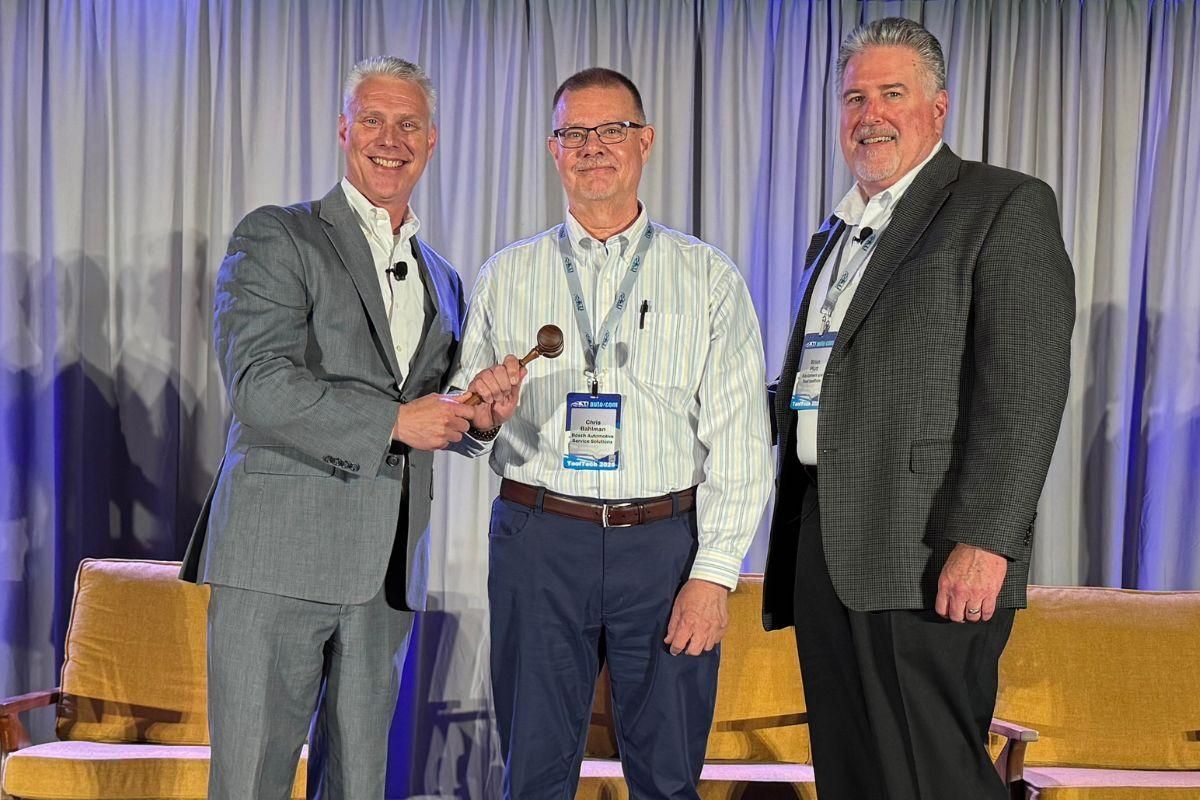














Stacey Phillips Ronak